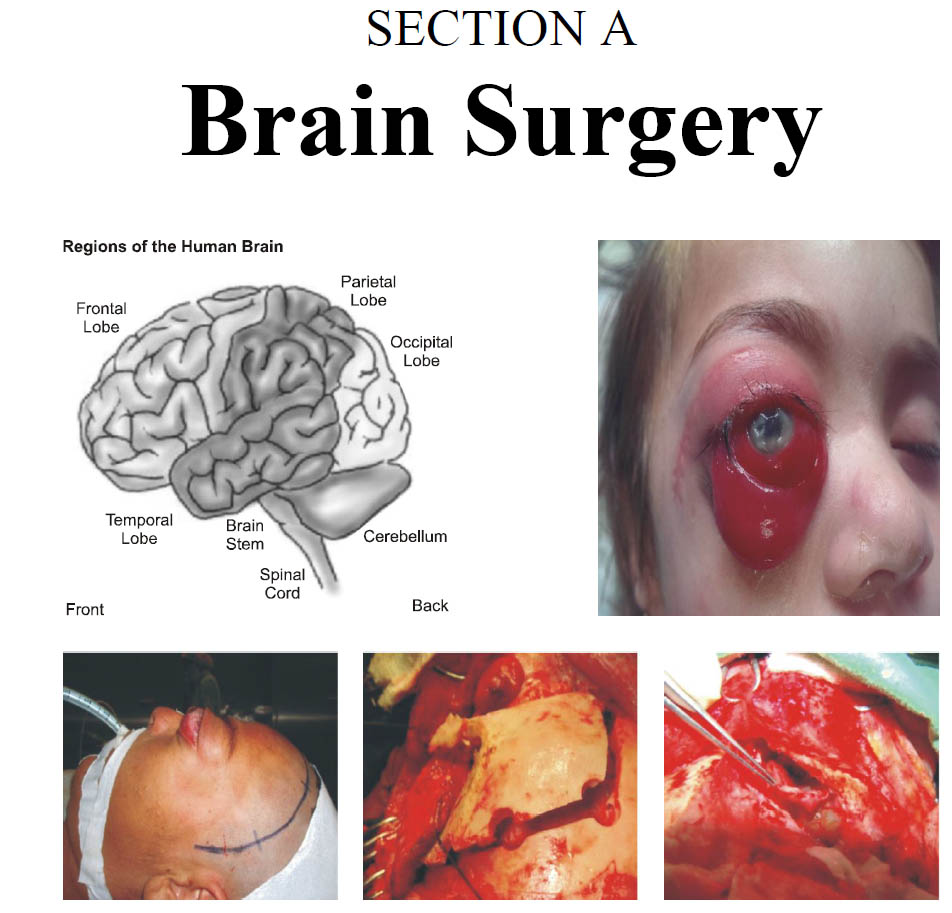Patterns, Frequency and Gender Dominance in Paediatric Neuro-trauma in a Tertiary Care Hospital in Peshawar
DOI:
https://doi.org/10.36552/pjns.v24i2.448Keywords:
Paediatric trauma, gender dominance, patternsAbstract
Objective: To determine the patterns, frequency and gender dominance in pediatric trauma presenting to Neurosurgery Department in a tertiary care hospital.
Material and Methods: This retrospective study was conducted in Department of Neurosurgery, Lady Reading Hospital, Peshawar. The medical records of all patients (0 – 15 years) with trauma admitted in our unit were analyzed retrospectively.Demographic details of the included subjects were noted down.
Results: A total of 448 patients were included in our study; 308 males and 140 females. Patients with 0 – 5 years were 40%, 6 – 10 years were 38% and 11 – 15 years were 22%. Extradural hematoma (28.12%) preceded depressed skull fracture (20.08%), followed by linear fractures (17.85), subdural hematoma (7.58%), contusions (5.80%) and subarachnoid hemorrhage (5.35%). Patients with diffuse axonal injury accounted for about 4.91%. Only 2 cases of cervical injury were noted.
Conclusion: The number of boys was comparatively greater than girls. Most of the patients were in the age group of 0 – 5 years. Ratio of extradural hematoma was the highest among all the injuries.
References
2. Farrell C.A., Canadian Paediatric Society, Acute Care Committee. Management of the paediatric patient with acute head trauma.Paediatrics & Child Health, 2013; 18 (5): 253–258.
3. ARAKI T, YOKOTA H., MORITA A. Pediatric Traumatic Brain Injury: Characteristic Features, Diagnosis, and Management. Neurol Med Chir (Tokyo) 2017; 57 (2): 82–93.
4. Faul M, Xu L, Wald MM, Coronado VG. Traumatic Brain Injury in the United States: Emergency Department Visits, Hospitalizations and Deaths 2002–2006. Atlanta (GA): Centers for Disease Control and Prevention, National Center for Injury Prevention and Control, 2010.
5. CDC. Rates of TBI-related Emergency Department Visits by Age Group-United States, 2001–2010: Centers for Disease Control and Prevention; 2016 [cited 2017 21 June].
6. CDC. Rates of TBI-related Hospitalizations by Age Group-United States, 2001–2010: Centers for Disease Control and Prevention; 2016 [cited last accessed 2017 21 June].
7. Cross D. S, Hall M. R. Child pedestrian safety: The role of behavioural science. Med J Aust. 2005; 182 (7): 318–19.
8. Faul M, Xu L, Wald MM, Coronado VG. Traumatic brain injury in the United States: emergency department visits, hospitalizations and deaths 2002–2006. Atlanta (GA): Centers for Disease Control and Prevention, National Center for Injury Prevention and Control; 2010.
9. Haarbauer-Krupa JK, Glang A, Kurowski B, Breiding MJ. Report to Congress: The Management of Traumatic Brain Injury in Children: Opportunities for Action. Atlanta, GA: Centers for Disease Control and Prevention; 2018.
10. Schneier AJ, Shields BJ, Hostetler SG, Xiang H, Smith GA. Incidence of pediatric traumatic brain injury and associated hospital resource utilization in the United States. Pediatrics, 2006; 118 (2): 483–492.
11. Rates of TBI-Related Emergency Department Visits by Age Group—United States, 2001 – 2010.
12. Giza CC, Kutcher JS, Ashwal S, et al. Summary of evidence-based guideline update: evaluation and management of concussion in sports: report of the Guideline Development Subcommittee of the American Academy of Neurology. Neurology, 2013; 80 (24): 2250–57.
13. Majdan M, Plancikova D, Brazinova A, et al. Epidemiology of traumatic brain injuries in Europe: a cross-sectional analysis. Lancet Public Health, 2016; 1: e76-e83.
14. Dewan MC, Mummareddy N, Wellons JC, et al. Epidemiology of Global Pediatric Traumatic Brain Injury: Qualitative Review. World Neurosurg. 2016; 91: 497-509.e1.
15. Alhabdan S, Zamakhshary M, AlNaimi M, et al. Epidemiology of traumatic head injury in children and adolescents in a major trauma center in Saudi Arabia: implications for injury prevention. Ann Saudi Med. 2013; 33: 52–6.
16. Grivna M, Eid HO, Abu-Zidan FM. Pediatric and youth traffic-collision injuries in Al Ain, United Arab Emirates: a prospective study. PLoS One, 2013; 8 (7): e68636.
17 Chiaretti A, De Benedictis R, Della Corte F, Piastra M, Viola L, Polidori G, et al. The impact of initial management on the outcome of children with severe head injury. Childs Nerv Syst. 2002; 18: 54–60.
18. Bhargava P, Singh R, Prakash B, Sinha R. Pediatric head injury: An epidemiological study. J Pediatr Neurosci. 2011; 6: 97–8.
19. Kraus JF, Fife D, Cox P, Ramstein K, Conroy C. Incidence, severity, and external causes of pediatric brain injury. Am J Dis Child, 1986 Jul; 140 (7): 687-93.
20. Nath PC, Mishra SS, Deo RC, Jena SP. Spectrum of Pediatric Head Injury with Management and Outcome: A Single Tertiary Care Center Study. Indian J Neurotrauma, 2015; 12: 10–18.
21. Araki T, Yokota H, Morita A. Pediatric Traumatic Brain Injury: Characteristic Features, Diagnosis, and Management. Neurol Med Chir (Tokyo). 2017; 57 (2): 82–93. Doi: 10.2176/nmc.ra.2016-0191.
22. Gururaj G, Kolluri SV, Chandramouli BA, Subbakrishna DK, Kraus JF. Bangalore, India: NIMHANS, Publication No. 61; 2005. [Last accessed on 2014 May 19]. Traumatic brain injury.
23. Ommaya AK, Goldsmith W, Thibault L: Biomechanics and neuropathology of adult and paediatric head injury. Br J Neurosurg. 2002; 16: 220–242.
24. Nath PC, Mishra SS, Das S, Deo RC. Supratentorial extradural hematoma in children: An institutional clinical experience of 65 cases. J Pediatr Neurosci. 2015 Apr-Jun; 10 (2): 114-18.
25. Parslow RC, Morris KP, Tasker RC, Forsyth RJ, Hawley CA, et al. UK Paediatric Traumatic Brain Injury Study Steering Group. Epidemiology of traumatic brain injury in children receiving intensive care in the UK. Arch Dis Child, 2005; 90: 1182–7.
26 dos Santos AL, Plese JP, Ciquini O, Júnior, Shu EB, Manreza LA, Marino R., Júnior Extradural hematomas in children. Pediatr Neurosurg. 1994; 21: 50–4.
27. Roy T. K., Arnold F., Kulkarni S., Kishor S., Gupta K., Mishra V., et al. Mumbai: IIPS? International Institute for Population Sciences (IIPS) and ORC Macro. 2000. National Family Health Survey (NFHS 2), 1998–99: India.

Downloads
Published
Issue
Section
License
The work published by PJNS is licensed under a Creative Commons Attribution-NonCommercial 4.0 International (CC BY-NC 4.0). Copyrights on any open access article published by Pakistan Journal of Neurological Surgery are retained by the author(s).












